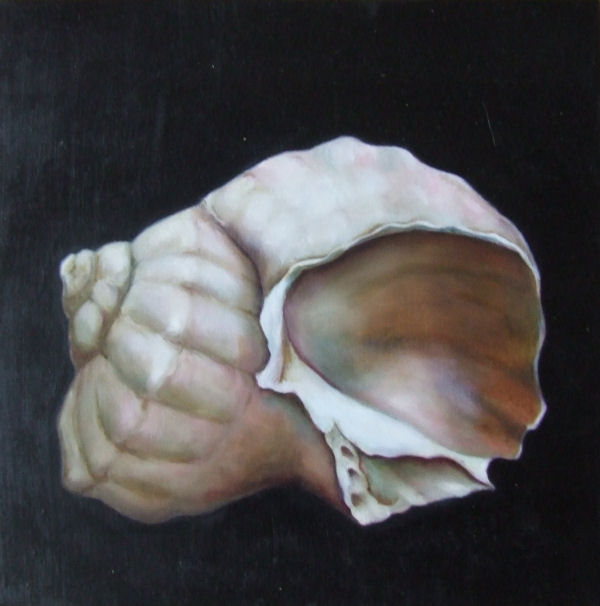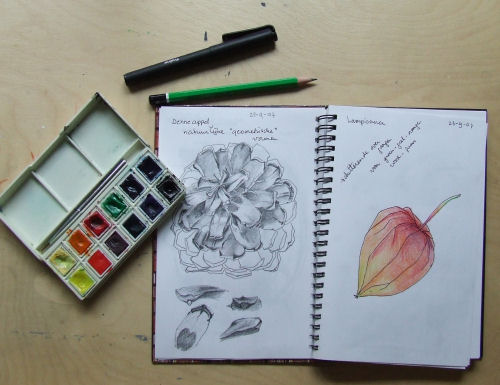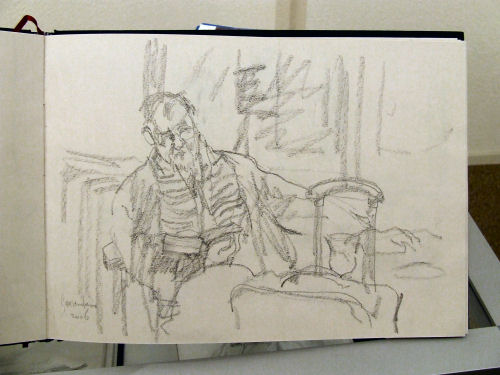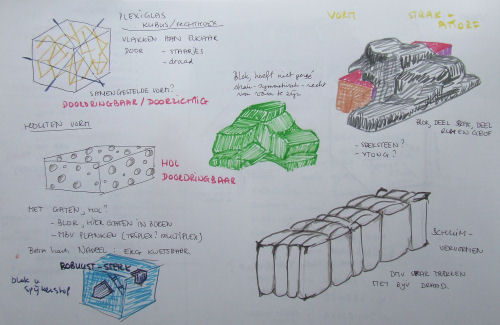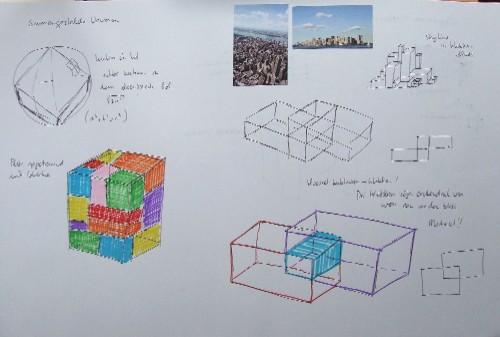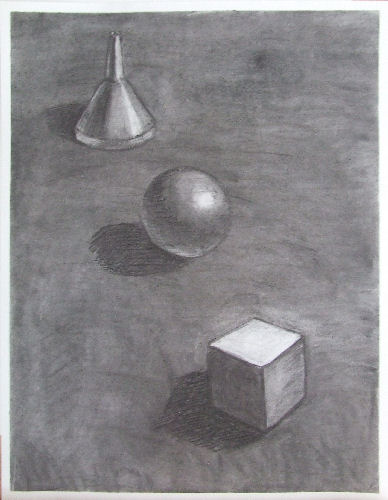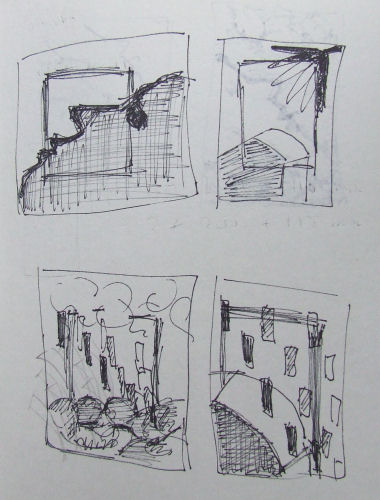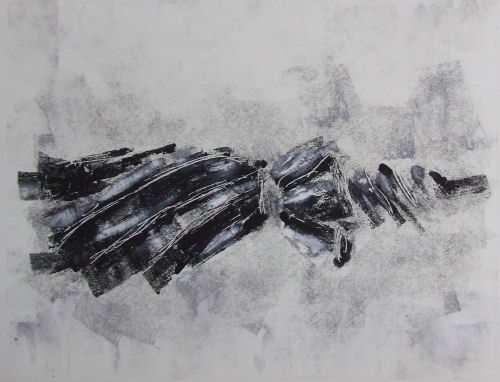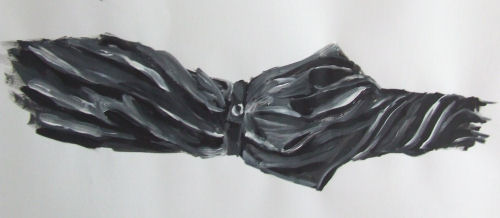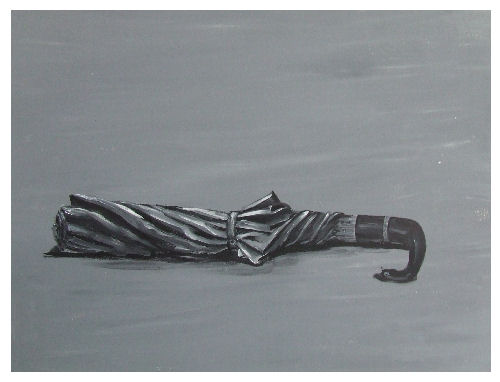Collecting ideas.
By sketching, you gather images, so to speak. The images can vary depending on your own interests. This gathering of images can be a goal in itself, but sketching can have even more goals.
The artist Flip Gaasendam has now filled 150 dummies, each with about 100 pages of sketches. That's a rich collection of images. He doesn't necessarily use these sketches to eventually create a piece of work. So, this is an example of collecting images as a goal in itself.
In addition to sketches for 2-dimensional work, you can, of course, also sketch as preparation for 3-dimensional work. Here you see a sketch from Flip Gaasendam's dummy. |
Left and right, you see sketches inspired by the theme "block". It concerns a 3-dimensional theme.
In addition to gathering ideas, there are also other reasons for sketching:
|
1. Sketching as research into ideas, ideation:
- Quickly capturing thoughts or brainstorming through drawings. This is particularly useful when working with a theme. Quickly and succinctly capture your ideas visually in a sketchbook. You can later refine them if needed..
- Evolving and refining. A sketch can provide you with a quick impression of an idea you want to develop. Through sketches, you can see early on if your idea works well or if it needs some adjustments.
- Moving beyond clichés. When working with a theme, initial clichéd images may come to mind. By moving past these images or even using them as a starting point, you can ultimately move beyond clichés..
- Surveying possibilities to make informed choices and gain confidence in your thoughts. Multiple sketches based on an idea give you the opportunity to choose, to take what appeals to you from each sketch, to recombine them, and so on.
|
2. Sketching as morphological research:
- Exploration of line, shape, tone, color, composition, etc.
- Material and technique studies. By sketching a lot and especially by challenging yourself to sketch quickly, you can learn to work more loosely. Especially under time pressure, you have to let go of being overly precise and focus on the essence.
Below are three examples. |
| Sketch in charcoal, focusing mainly on light and shadow. Actually, this sketch is already too detailed. The goal is to depict shadows in such a way that depth is achieved in the work.. |
| A series of compositional sketches. These are different compositions based on a theme. |
| A material study, monotype. In this quick sketch, I mainly looked at the visual aspect of the monotype technique. |
3. Sketch as exploration and preparation.
Expanding visual knowledge through sketches doesn't provide certainty about everything. By this, it's meant that a sketch doesn't solve all questions about composition, color, subject, technique, etc. for you. Elaboration doesn't merely entail enlarging a sketch. The change in size does "something" to the sketch. Also, choosing a different material will yield a different outcome. There is once again an interaction between the artwork and the creator.
Expanding visual knowledge through sketches is to avoid facing too many unpleasant surprises.. |
| A preparatory sketch of an umbrella, in acrylic paint, painted in a looser style. Size is approximately 11x25cm. |
| The final execution in acrylic paint. Size is 50x65 cm. |
| Sketching can be done in many materials. Don't limit yourself to just pencil or charcoal. You can also create a series of sketches in acrylic and oil paint. It's from sketching in multiple materials that you learn a lot. Sketches can be in black and white, but of course, also in color. |



